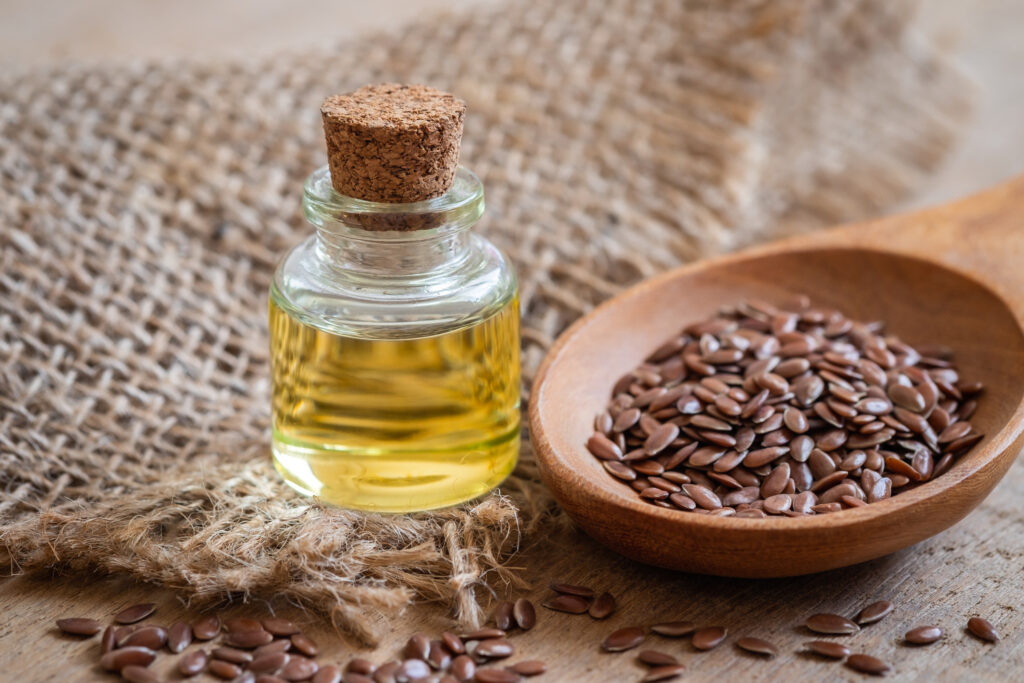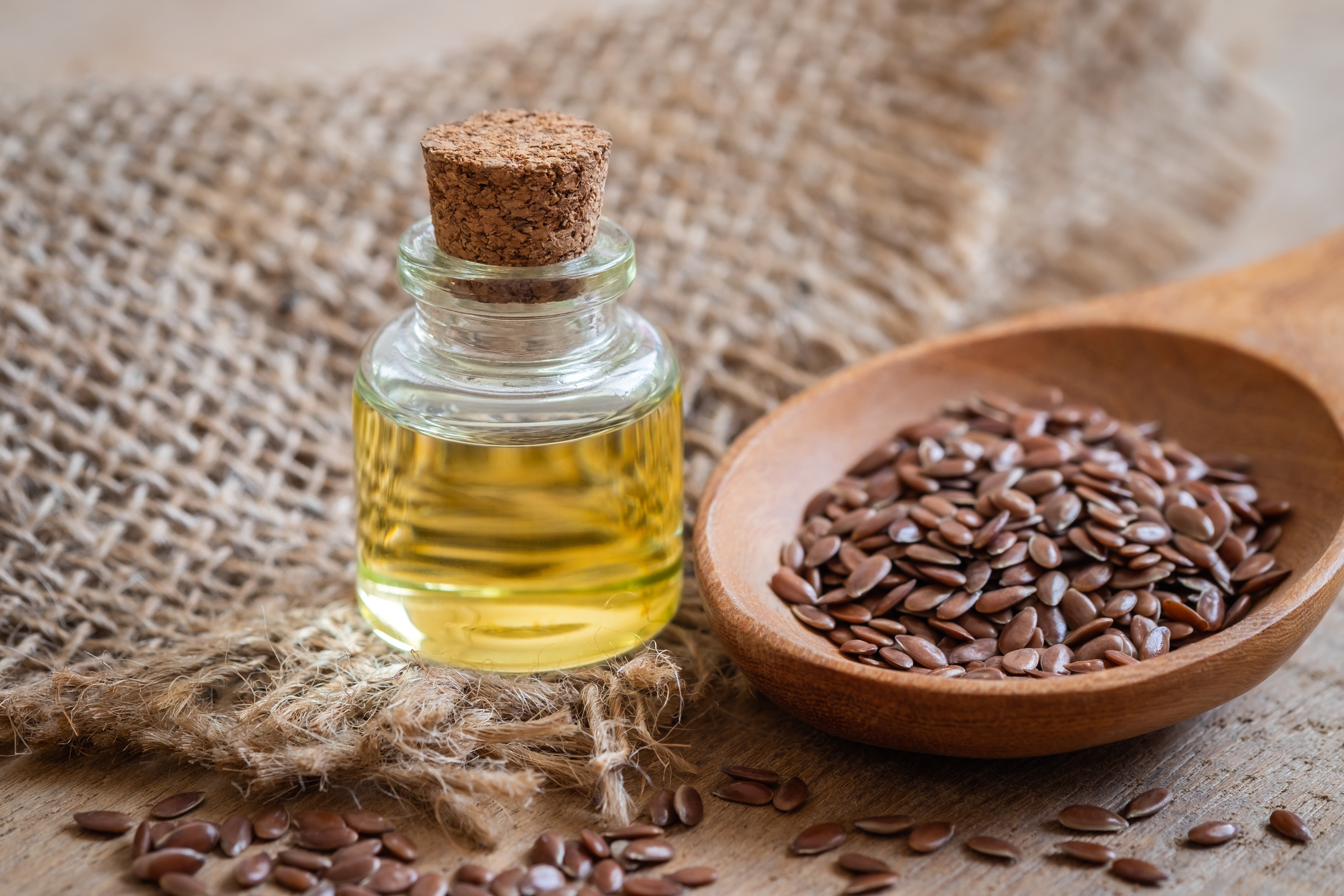
One of the earliest domesticated crops in human history, flax has found a wide range of applications through the millennia. As a valuable source of food, animal feed, fiber, flooring, and many other uses, it’s no wonder why the Latin name of this ancient herb translates as “most useful.” Every part of the plant is used commercially, from the stalks that supply fiber to produce linen to the seeds that serve as an edible snack and oil feedstock. Although flax is not as widely used today as it was a century ago, flaxseed oil production still holds great potential for many industries around the world.
When it comes to the question of linseed oil vs. flaxseed oil, some sources use the terms interchangeably because both oils originate from the same plant. However, “flaxseed oil” generally refers to expeller-pressed edible fat, while “linseed oil” refers to chemically extracted industrial oil. The fundamental difference between linseed oil vs. flaxseed oil is the processing methods used to extract the oil. Let’s compare these extraction methods, the resulting types of oil, and their common applications in a growing market.
Flax from the fields
Domesticated nearly 10,000 years ago, with evidence of its use dating back even further, flax has adapted to growing around the world, particularly in China, Russia, and Canada. Although hundreds of varieties exist, the most common cultivars grown today have been specifically bred to produce either seeds or fiber. Oilseed flax varieties are typically shorter and bushier, with more seeds than fiber flax, which is densely planted to encourage tall stalks with minimal branches.
Known for their delicate blue color, flax flowers open each morning and shed their petals by afternoon after self-pollinating. Small oval-shaped seeds form inside dry capsules or “bolls” that turn brown and rattle when mature.
Flaxseeds are harvested with a combine or stripper to remove them from the stalk, which is either chopped down or left standing in the field. This remaining straw was traditionally burned or baled for use as animal feed or bedding. New uses for straw that are currently being explored include insulation, plastic composites, specialty paper production, and alternatives to fiberglass.
Flax plants grown for fiber specifically are harvested before the seed bolls fully mature. The plants are pulled from the ground or mowed and piled into heaps to dry. The fibers are separated from the stalks through several steps until the strands can be spun into yarn and woven into linen. Flax is a versatile fiber crop, fine enough to create delicate lace and soft bedsheets—yet strong and durable enough to produce sturdy industrial canvases, ropes, and mats.
Flaxseed oil production
Depending on the variety and growing conditions, Flaxseed contains between 38-45% oil by weight. Compared to other oilseeds that must be cracked, shelled, or flaked before pressing, flaxseeds require relatively minimal pretreatment.
Flaxseed is often cooked in stacked cooking and drying vessels to prepare the material for extraction. Cooking ruptures the cell walls to release the oil for more efficient pressing. However, high heat can oxidize the omega-3 fatty acids in flaxseed oil, causing bitter flavors and destroying other beneficial components like antioxidants.
Cold pressing is often preferred for high-quality flaxseed oil production to preserve these nutrients. This method skips the cooking and drying and feeds raw flaxseed straight into the expeller press. Since the seeds haven’t been cooked to release the oil, the press must work harder to squeeze it out using mechanical pressure. Processors often resort to double pressing to recover as much oil as possible.
The Anderson Super Duo™ Series Expeller® offers a streamlined solution to this dilemma. Its unique dual-press design squeezes out more oil in a single pass—eliminating the need for multiple presses and the extra time and energy costs they add. Although there’s no external heat applied during the cold pressing process, the frictional heat generated by the press may elevate the oil temperature to 104 degrees Fahrenheit, which isn’t hot enough to destroy its beneficial compounds.
Because no chemicals are added during mechanical processing, expeller-pressed flaxseed oil is fit for human consumption. As a rich source of heart-healthy omega-3 fatty acids, dietary fibers, and antioxidants, flax is gaining popularity as a functional food used in baked goods, salad dressings, dairy products, and more.
Also read: Maximize Your Expeller-Pressed Oil Process with Overflow
Linseed oil production
Industrial linseed oil, conversely, is produced by solvent extraction. Heat-treated flaxseed is pre-pressed and soaked in hexane to dissolve the oil from the meal. Because hexane and other solvents are highly toxic, further processing is required to remove the remaining chemicals from both byproducts.
Chemically extracted linseed oil is used extensively in paints, varnishes, wood finishes, concrete sealants, and leather conditioners. Other chemicals may be added during processing to emphasize certain properties—rendering industrial linseed oil inedible.
For example, linseed oil hardens when exposed to air, making it useful as a varnish. However, raw linseed oil takes weeks to dry completely, so it’s often mixed with petroleum-based additives to speed up the drying time. This is known as boiled linseed oil, although there’s no boiling involved. Heated linseed oil is referred to as polymerized linseed oil because the heat triggers polymerization, increasing the oil’s viscosity and decreasing the drying time.
The hardening property of linseed oil led to the 19th-century invention of linoleum (which translates as “flax oil”). The durable flooring is made by oxidizing linseed oil to form a thick cement mixed with resin and wood flour and hardened onto a jute backing. Linoleum was a popular floor covering for over a century until it was replaced by vinyl flooring, also mistakenly called linoleum. Driven by increasing demands for environmentally friendly, biodegradable building materials, linseed-based linoleum is experiencing a comeback.
The future of flaxseed oil production
As consumers learn more about the health benefits of consuming flaxseeds and flaxseed oil while utilizing more everyday products made with linseed oil or flax fiber, the potential for this ancient crop continues to grow.
About 3 million metric tons of flaxseed are produced globally every year. Worth an estimated $800 million in 2023, the flaxseed market is expected to grow nearly 12% by 2028, reaching $1.4 billion.
To meet this growing demand for linseed and flaxseed oil production, processors must find ways to extract these versatile lipids more efficiently, economically, and eco-consciously. By reducing the energy-draining steps involved in flaxseed oil production, processors can get the most use (and the maximum value) from this “most useful” seed.
